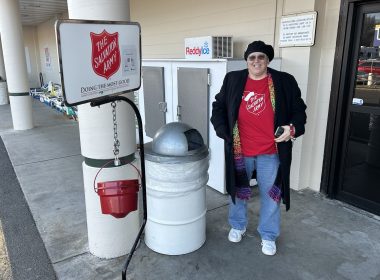Adaptation and mitigation could play a larger role going forward.
By Mindy Farabee –
In recent years, a raft of new data has emerged on the impacts of rising sea levels around the globe, painting a far more dire picture of how water-borne disasters could remake the world in coming decades. Now, that’s prompting something of a sea-change in how communities are approaching the growing hazards posed by rising oceans.
“The key thing is, initially, a lot of our attention was on reversing climate change,” said Rich Gordon, a northern California lawmaker who recently passed legislation to create a statewide database to be used for planning efforts. “I think the big shift now in thinking…even if we stop emissions tomorrow, we’ll still have decades of rise, because of cumulative effects.” What’s important now, he said, is to begin looking at ways to adapt.
Two recent studies have helped rekindle the discussion. In one, researchers at the University of Georgia estimated that over 13 million people living along U.S. coasts could be pushed inland by flooding by the end of this century. Nearly simultaneously, a study in the journal Nature posited that the huge West Antarctic ice sheet is at risk of collapsing by 2100, combining with other factors to drive sea levels up by six feet, or nearly double what had previously been predicted by the U.N.’s Intergovernmental Panel on Climate Change.
Estimates still vary widely, but the underlying factors are well understood. Sea level rise is driven by both glacier melt and expansion of warmer waters, as a consequence of greenhouse gas emissions, and some of its effects have already been observed.
“There’s a measurement near the Golden Gate Bridge, where the water has risen seven inches in the last century,” Gordon said. “It’s rising at a faster rate moving forward.”
California may be home to the third most coastal lands in the continental U.S., but it’s communities in the nation’s southern region that have recently been singled out as some of the most vulnerable. Already, there and elsewhere, a year of record flooding driven by extreme weather has made headlines around the world. From a disaster relief perspective, what happens when there’s more water to fuel the storms?
“The biggest concern for me is that even a small rise in sea level could seriously impact storm surges,” said Jeff Jellets, disaster coordinator for the Southern Territory. Even under current conditions, Jellets points out, flood maps show parts of Georgia inundated in the aftermath of a catastrophic hurricane. Going forward, two of the nation’s most at-risk cities are Tampa and Miami, where relief efforts are complicated by large elderly populations coping with dietary restrictions and mobility issues. Infrastructure resources could face new perils as well. Houston, for instance, has multiple oil refineries potentially lying in the path of rising waters.
And while some of the country’s priciest real estate sits along its beaches, overall it’s often the poorest who are most in harm’s way. “I look at Louisiana, those living in the floodplains usually can’t afford to live anywhere else,” Jellets said.
Overall, 69 percent of Americans liked the idea of the U.S. taking action to limit its greenhouse gas emissions, according to a 2015 poll by the Pew Research Center. Strikingly, however, among 18 to 29-year-olds, that figure jumps to 85 percent. “[Climate change is] a big issue for millennials,” noted John Berglund, Emergency Disaster Services director for the Western Territory.
Based on new estimates, people born today could live to see some of these dire predictions play out. In 2012, Berglund was serving as Eastern Territory coordinator when Hurricane Sandy hit, dramatically illustrating the effects of sea level rise particularly around New York City. This past February, he and representatives from all five zones attended a conference in Hong Kong, where they explored new thinking in disaster preparedness and the idea of moving toward a “culture of prevention” in regards to disaster reduction.
The conference took some inspiration from a 1999 statement by U.N. Secretary Kofi Annan, in which he called disaster reduction “a moral imperative.” Seeking to reduce risks, The Salvation Army has begun offering training and support in several flood-prone communities, taking proactive steps such as clearing blocked drainage channels to aid water flow away from inhabited areas, building more robust bridges to assist in evacuations, working with local authorities to provide early warning equipment, and implementing nets and barriers to protect fish stocks and the livelihoods of local fishing communities.
“Organizations like The Salvation Army that play a key role in disaster response have thought through where we have vulnerabilities,” Gordon said. “That information needs to be part of the conversation.”
Ultimately, though, it will be the world’s governments that must do the heavy lifting in disaster reduction, noted Major Alison Thompson, international emergency services coordinator.
“A culture of prevention is a difficult issue for communities which have little or no influence over policies in industrialized countries which increase the effects of global warming and rise in sea levels,” she said. “Governments will need to acknowledge the impact of their policies and practices on particularly vulnerable communities in this regard and be encouraged to invest in ways to reduce such impact and build capacity in order to prevent further losses.”
In the meantime, however, mitigation has become more than a buzzword—it’s now a huge niche market, according to Berglund.
“A lot of foundations want to fund it, because there’s a lot of wisdom in it, and we come full circle to where the conversation started,” he said. “That’s because rising sea water has changed the game.”













